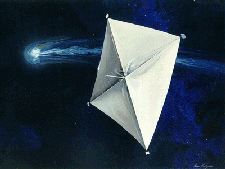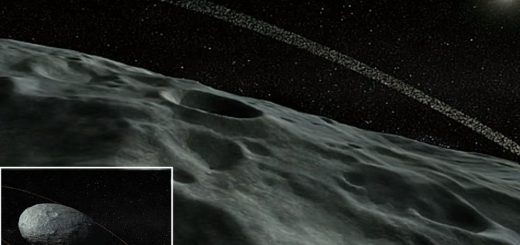How Solar Sails Work

Hundreds of space missions have been launched since the last lunar mission, including several deep space probes that have been sent to the edges of our solar system. However, our journeys to space have been limited by the power of chemical rocket engines and the amount of rocket fuel that a spacecraft can carry. Today, the weight of a space shuttle at launch is approximately 95 percent fuel. What could we accomplish if we could reduce our need for so much fuel and the tanks that hold it?
International space agencies and some private corporations have proposed many methods of transportation that would allow us to go farther, but a manned space mission has yet to go beyond the moon. The most realistic of these space transportation options calls for the elimination of both rocket fuel and rocket engines — replacing them with sails. Yes, that’s right, sails.
NASA is one of the organizations that has been studying this amazing technology called solar sails that will use the sun’s power to send us into deep space. In this article, HowStuffWorks shows you how the idea of solar sailing developed, where NASA and others are in testing this technology and how far and fast solar sails might take us in the universe.
Nearly 400 years ago, as much of Europe was still involved in naval exploration of the world, Johannes Kepler proposed the idea of exploring the galaxy using sails. Through his observation that comet tails were blown around by some kind of solar breeze, he believed sails could capture that wind to propel spacecraft the way winds moved ships on the oceans. While Kepler’s idea of a solar wind has been disproven, scientists have since discovered that sunlight does exert enough force to move objects. To take advantage of this force, NASA has been experimenting with giant solar sails that could be pushed through the cosmos by light.
There are three components to a solar sail-powered spacecraft:
Continuous force exerted by sunlight
A large, ultrathin mirror
A separate launch vehicle
A solar sail-powered spacecraft does not need traditional propellant for power, because its propellant is sunlight and the sun is its engine. Light is composed of electromagnetic radiation that exerts force on objects it comes in contact with. NASA researchers have found that at 1 astronomical unit (AU), which is the distance from the sun to Earth, equal to 93 million miles (150 million km), sunlight can produce about 1.4 kilowatts (kw) of power. If you take 1.4 kw and divide it by the speed of light, you would find that the force exerted by the sun is about 9 newtons (N)/square mile (i.e., 2 lb/km2 or .78 lb/mi2). In comparison, a space shuttle main engine can produce 1.67 million N of force during liftoff and 2.1 million N of thrust in a vacuum. Eventually, however, the continuous force of the sunlight on a solar sail could propel a spacecraft to speeds five times faster than traditional rockets.
Now, let’s take a closer look at those sails.



 Creators of mankind
Creators of mankind Description of “Tall white aliens”
Description of “Tall white aliens” Where they came from?
Where they came from? About hostile civilizations
About hostile civilizations The war for the Earth
The war for the Earth “Tall white aliens” about eternal life
“Tall white aliens” about eternal life Video: “Nordic aliens”
Video: “Nordic aliens” Aliens
Aliens Alien encounters
Alien encounters The aliens base
The aliens base UFO
UFO Technology UFO
Technology UFO Underground civilization
Underground civilization Ancient alien artifacts
Ancient alien artifacts Military and UFO
Military and UFO Mysteries and hypotheses
Mysteries and hypotheses Scientific facts
Scientific facts


















